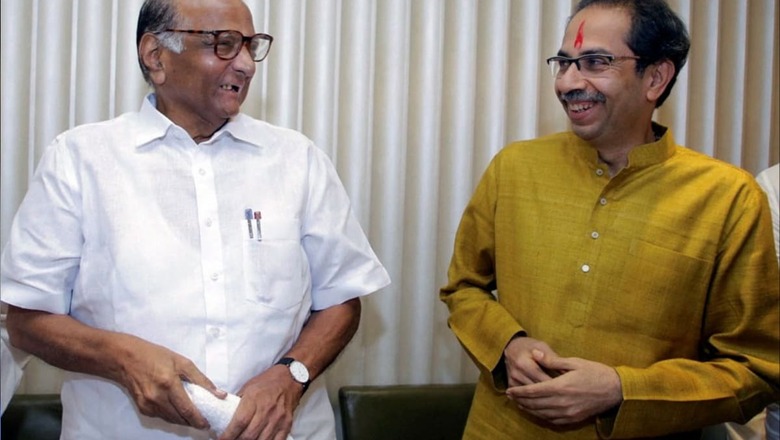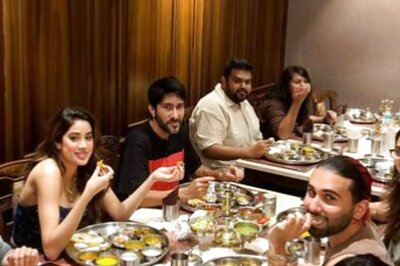
views
It was Gopal Krishna Gokhale, a Maharashtrian, who first said, “What Bengal thinks today, India thinks tomorrow.” Maharashtrians of another generation were thus awaiting the West Bengal Assembly results with bated breath. For there has been a ripple for quite some time across political groupings and public intellectuals in the state that their future depended on what eventually happened in West Bengal. A victory for the BJP would have meant that the ruling alliance in Maharashtra would be extremely vulnerable, with the BJP and particularly former chief minister Devendra Fadnavis snapping at its heels for the past 18 months.
While the Opposition has left no stone unturned, Thackeray and the Maha Vikas Aghadi (MVA), a coalition of three parties including the Congress, the Nationalist Congress Party (NCP) and the Shiv Sena, have always landed on their feet. Even as the Centre’s handling of the COVID situation came under the scanner, many feared the second wave could also bring down the curtain on the MVA government.
But then two things happened—Bengal opted decisively for the Trinamool Congress and Mamata Banerjee as its chief minister, and there was a drop in COVID cases in Maharashtra. There was a collective sigh of relief among the BJP’s opponents in Maharashtra and a renewed hope that the triumvirate of ‘Lal, Bal and Pal’—Punjab, Maharashtra and Bengal—could pose a challenge to the BJP. All three states are now led by strong regional chieftains who defeated the BJP. It is no wonder then that Maharashtra’s leaders—Pawar, Uddhav Thackeray, and even his estranged cousin Raj Thackeray—lost no time in welcoming the Bengal poll verdict and congratulating Mamata Banerjee, promising her support in the future.
The Trinamool Congress’s (TMC) victory in Bengal immediately leads to the possibility of a realignment of opposition forces across the country with Sharad Pawar perhaps playing a key role in weaving the diverse forces together. It is not a far-fetched ambition, given that he brought together the Shiv Sena and the Congress in Maharashtra who were once completely opposed to each other. Since then, Uddhav Thackeray has toned down the communal rhetoric of his party, even apologising in the Maharashtra Legislative Assembly for mixing religion with politics. The Congress and the Sena have also been able to reach a compromise on the vexatious issue of changing the name of Aurangabad city to Sambhaji Nagar (a longstanding demand of the Sena) by simply pushing it on the backburner to make sure that nothing jeopardises their alliance and the government.
The dream of a coalition of opposition forces is not an impossible one, given that apart from individual meetings between Uddhav and Mamata, there was much bonhomie and camaraderie between both of them and Congress interim president Sonia Gandhi, when she called a virtual meeting of opposition CMs in August last year to discuss the future of medical and engineering students. A section of Congressmen in Maharashtra believe their party’s rout in West Bengal was deliberate as Congress leader Rahul Gandhi’s main goal was to defeat the BJP. The alliance with the Left ensured the votes did not get divided further—with some Left sympathizers switching to the BJP and some Congressmen opting for the TMC. As a result, it was a direct battle between the BJP and the TMC. If that is true, the Congress, which has already taken a backseat in Maharashtra in the MVA, might be willing to consider all its options to make sure it defeats the BJP in 2024.
Bengal and earlier Maharashtra have made it apparent that while in a direct battle with the Congress, the BJP fares better, it is unable to combat the regional forces. It is the reverse with the Congress—it could always gain over regional parties (like the NCP), which despite stronger leadership than the Congress have to seek an alliance with the national party to safeguard their own political space.
The Bengal results thus have come as a boost to both the Shiv Sena and the NCP, already in alliance with the Congress. Even culturally, Maharashtra has followed wherever Bengal has led, be it social and caste reforms, push for widow remarriage, abolition of child marriage, education for girls and lower castes etc. At the time of Independence, Bengal and Maharashtra were two of the most emancipated regions in the country.
Maharashtra is as fiercely determined as Bengal to hang on to the liberal space. A strong weapon against the Maharashtra government could have been its COVID management, but the state’s testing and tracing model has been particularly effective compared to some other states. The administration also seemed much better prepared in handling the second wave, be it beds, oxygen or medicines.
Read all the Latest News, Breaking News and Coronavirus News here. Follow us on Facebook, Twitter and Telegram.




















Comments
0 comment